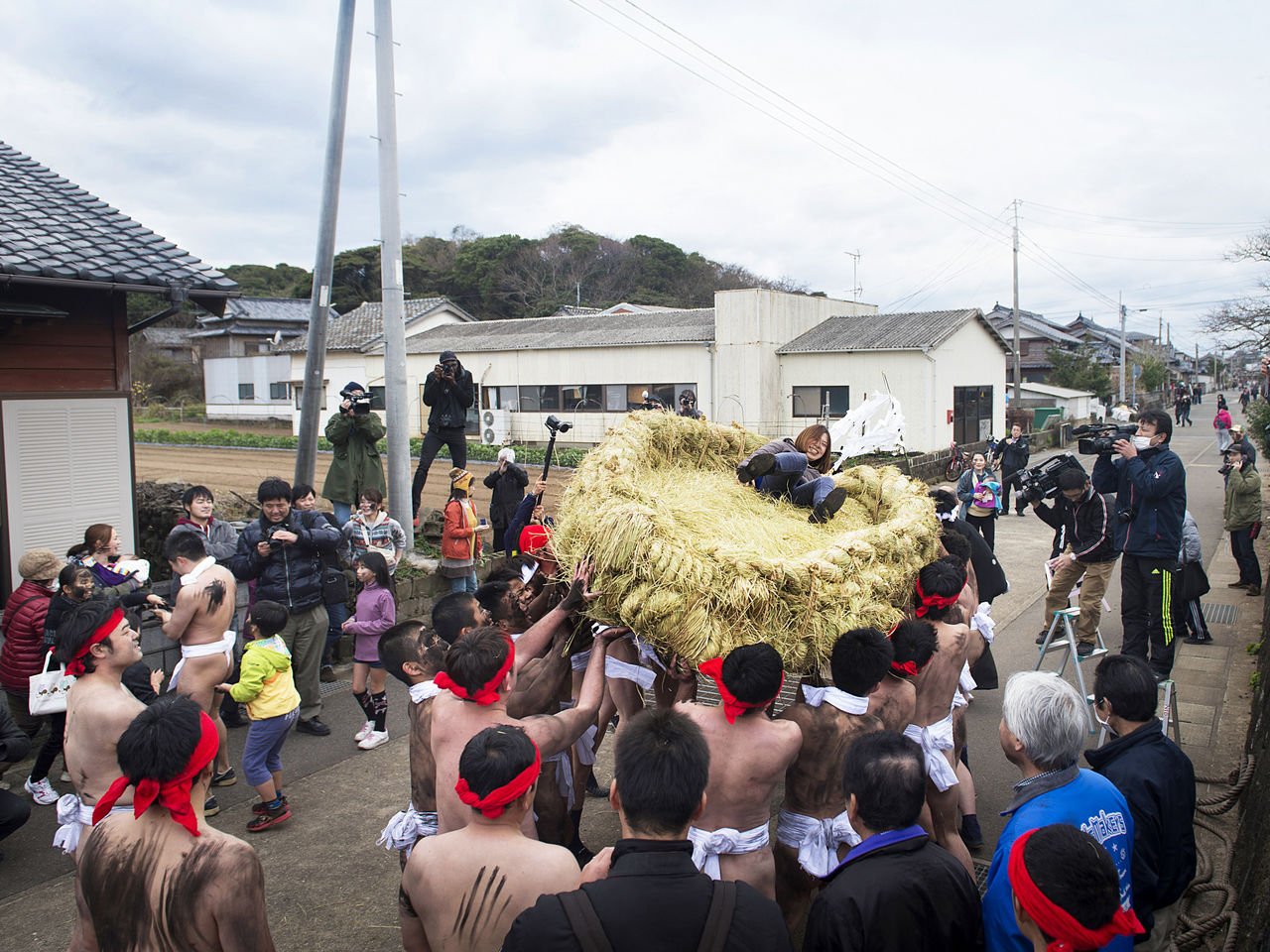
Nagasaki’s Gotō Islands: A Treasure House of Unique Festivals and Natural Beauty
Guideto Japan
- English
- 日本語
- 简体字
- 繁體字
- Français
- Español
- العربية
- Русский
The Hetomato: Japan’s Weirdest Folk Festival?
Traveling around Japan photographing festivals has convinced me that small islands are home to the most unusual traditions in the country. Almost every small island I have set foot on boasts its own unique celebration, many of them downright bizarre. Perhaps it is the isolation of these remote communities that gives rise to such distinct local culture.
I have experienced plenty of weird and wonderful festivals, including hyper-aggressive melees of grappling men and slightly surreal traditions, kept alive by residents of sparsely inhabited islands set in the farthest reaches of the archipelago.
 The sinking sun casts a warm glow over the silhouette of the Takasaki point on Nakadōri Island.
The sinking sun casts a warm glow over the silhouette of the Takasaki point on Nakadōri Island.
Of all the bizarre island festivals in Japan, the Hetomato Matsuri on the isle Fukue in the Gotō Islands in Nagasaki Prefecture has always had a special fascination for me. Held in the island’s Shimosakiyama district on the third Sunday of January, Hetomato marks the first full moon of the New Year. The roots of the festival remain a mystery. No one, not even locals, seem to know how or when it started, or even the origins of the word Hetomato. I have always admired the way locals keep the tradition alive without feeling the need to cobble together some explanation of its supposed origins or deeper meaning. I was excited to travel to the island and get a first-hand glimpse of the curious festival. Hetomato did not disappoint.
 The author during the Hetomato Festival, complete with soot-smeared face.
The author during the Hetomato Festival, complete with soot-smeared face.
The Helter-Skelter World of the Hetomato Matsuri
Hetomato starts with bouts of amateur sumō in the precincts of the Shirahama Shintō Shrine. Once the performances are over, two women dressed in ornate kimonos and perched precariously atop sake barrels take part in a game of hanetsuki, a battledore-and-shuttlecock game traditionally played at New Year. Things escalate quickly from there. The streets are soon thronged with soot-covered young men fighting frantically for possession of a waradama, a heavy ball of straw made of thickly coiled rope, in a game known as tamaseseri. What follows is like a greatest hits compilation of bizarre festival scenes. Things move fast, like a swollen river, and I had to work hard to keep pace.
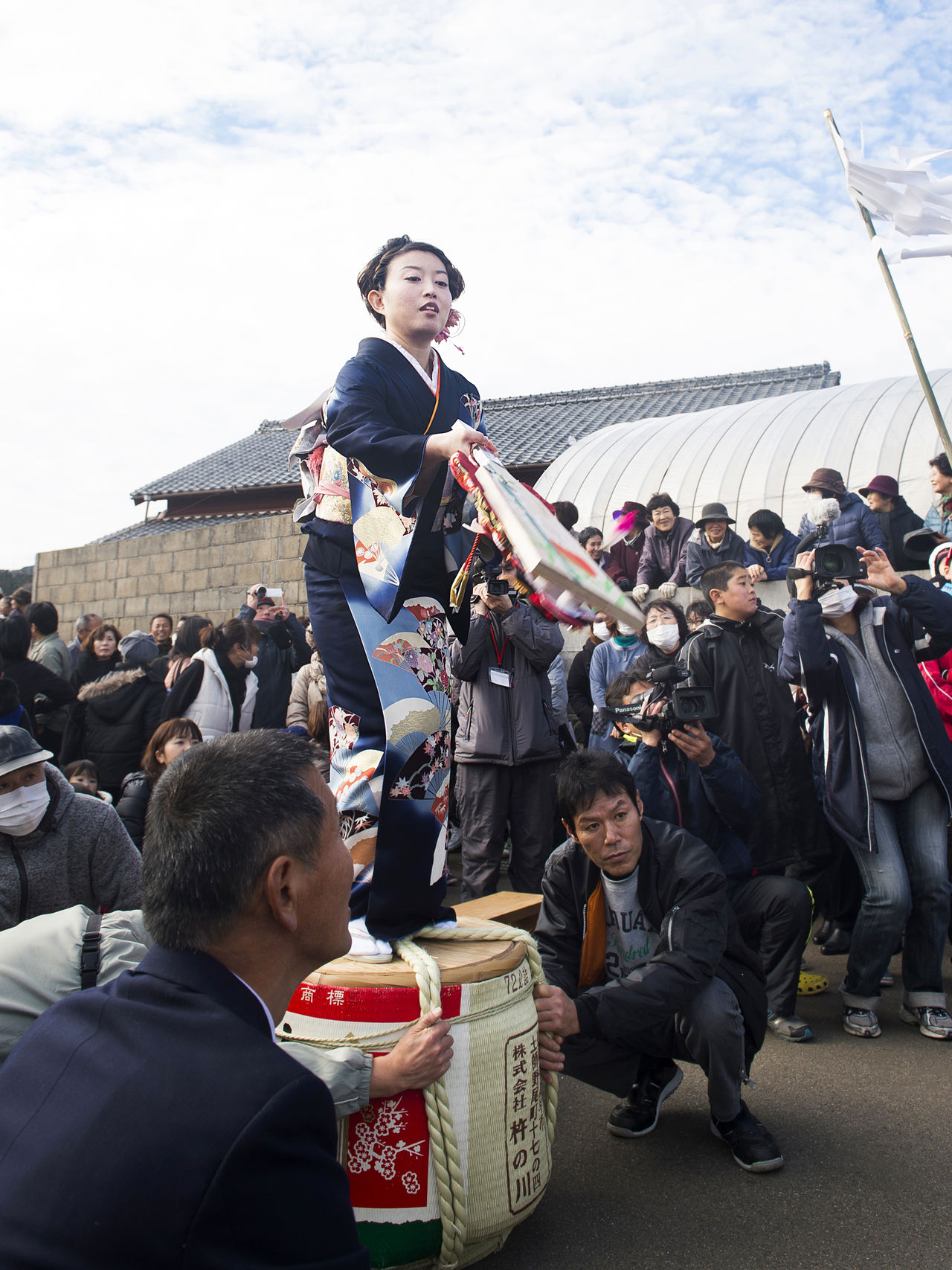 A woman perches on a sake barrel for a game of battledore. Bizarre sights like this are everywhere during Hetomato.
A woman perches on a sake barrel for a game of battledore. Bizarre sights like this are everywhere during Hetomato.
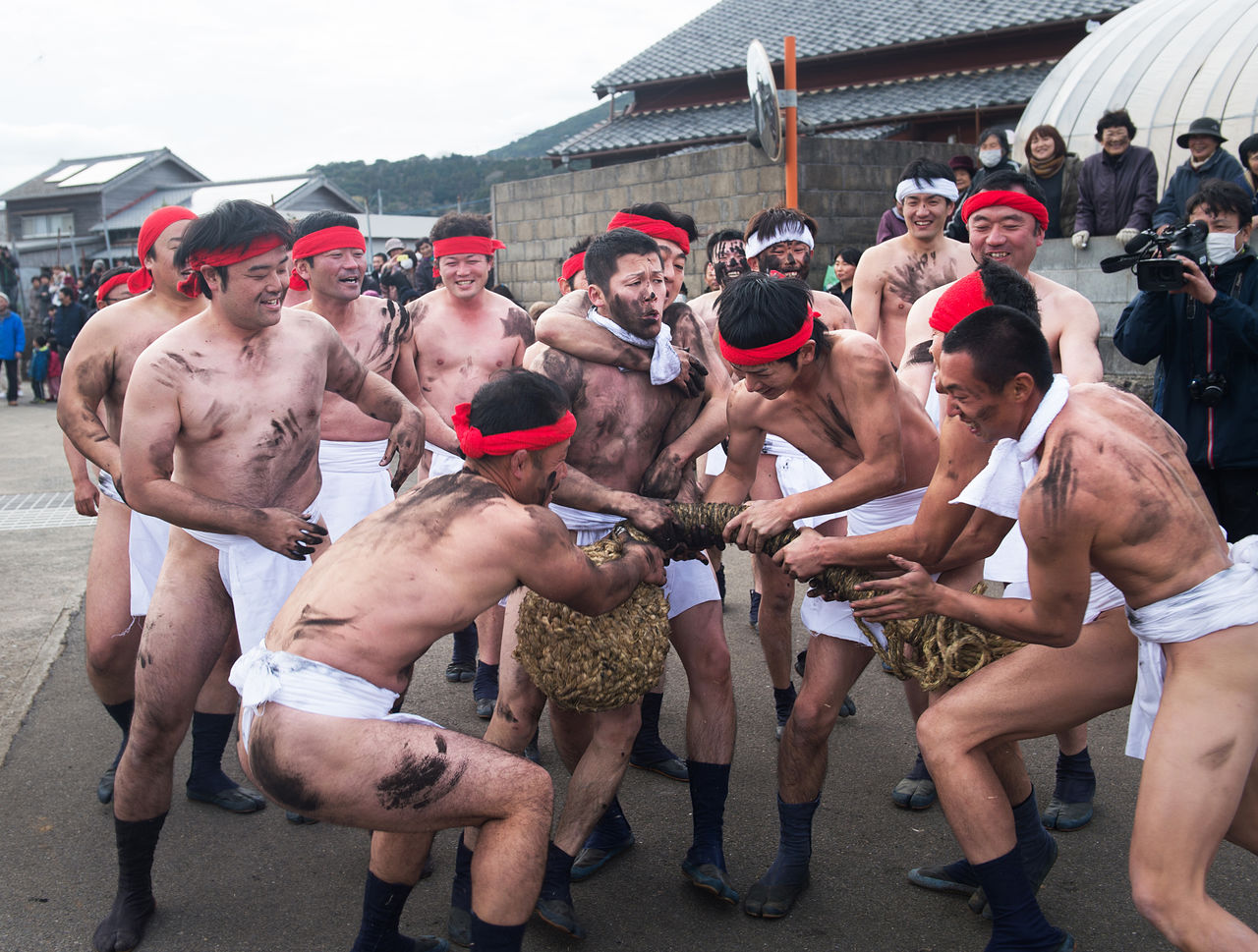 Men in loincloths grapple for possession of the waradama.
Men in loincloths grapple for possession of the waradama.
During this rough-and-tumble part of the festivities, innocent spectators are indiscriminately daubed in soot known locally as hegura. Women scream and run desperately to evade the grubby clutches of the daubed-up men, while many children sob uncontrollably in shock. I was subjected to this treatment several times while shooting pictures. Besmudged recipients are said to receive a whole year’s worth of good luck and protection against illness.
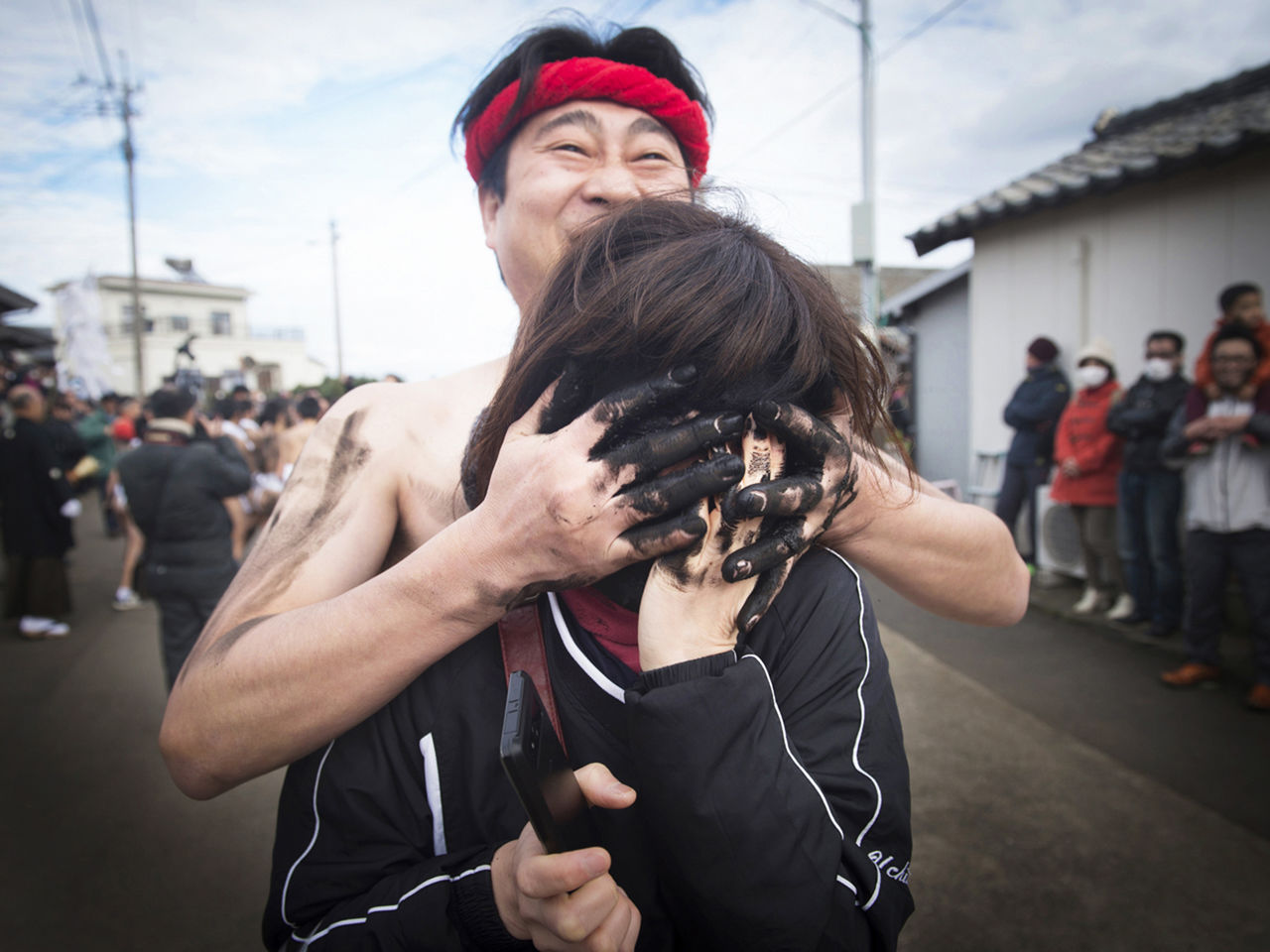 A woman has her face smeared with soot. Hegura is believed to provide protection against illness during the coming year.
A woman has her face smeared with soot. Hegura is believed to provide protection against illness during the coming year.
The excitement reaches fever pitch with the entry of a huge zōri (straw sandal) weighing a mighty 350 kilograms. The sandal is paraded through the streets by the strongest men on the island. At the appearance of the giant sandal young women watching around me scattered in fear—and with good reason. Any unmarried woman unlucky enough to be caught is dumped on top of the sandal and subjected to violent bumping as the procession makes its way through the streets.
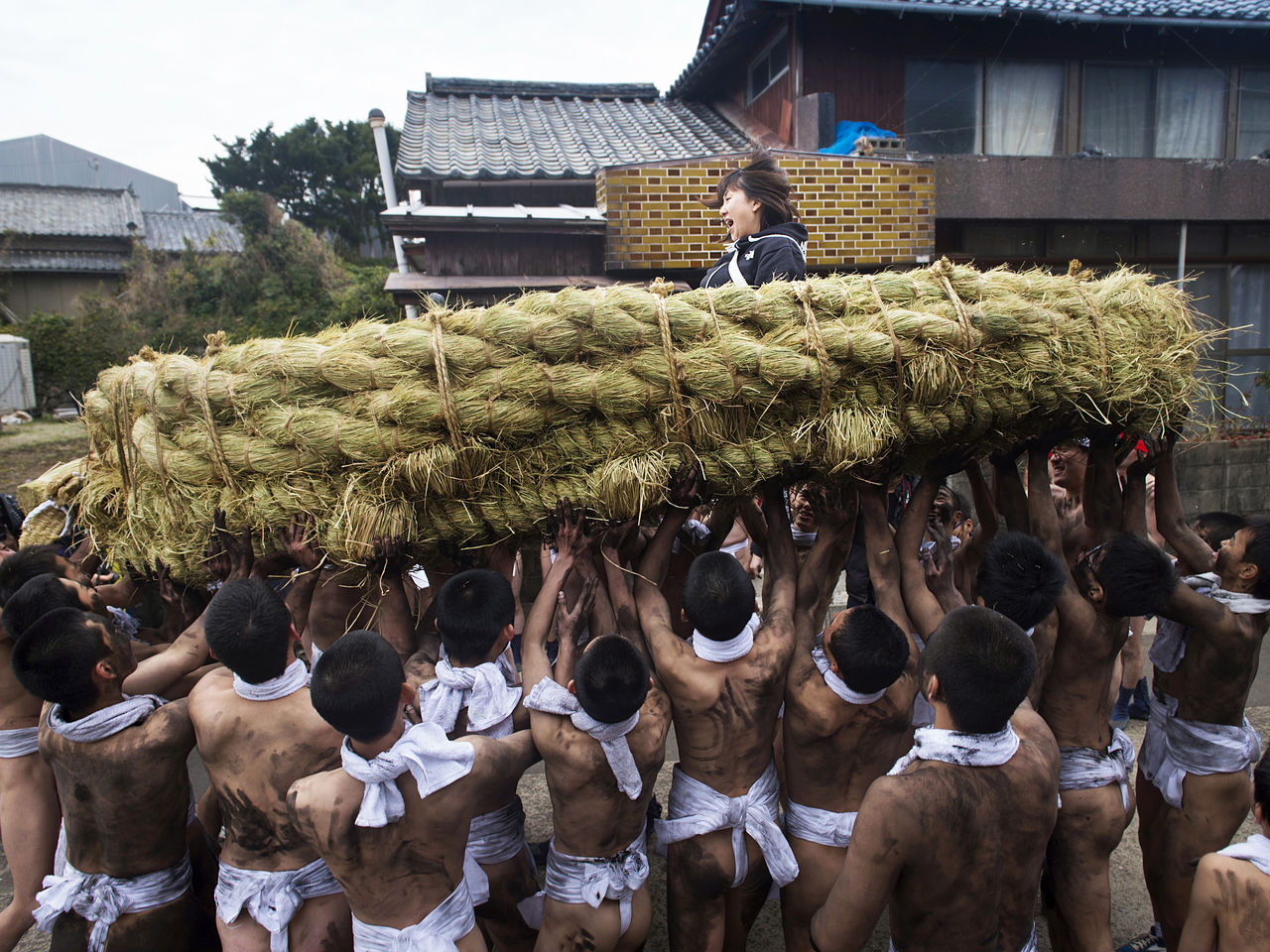 A succession of young women are lifted onto the giant straw sandal and carried through the streets. The locals have been carrying on like this for centuries, though they’ve long since forgotten why.
A succession of young women are lifted onto the giant straw sandal and carried through the streets. The locals have been carrying on like this for centuries, though they’ve long since forgotten why.
I saw one woman captured right in front of my eyes. The look of desperation on her face as she tried to escape, and her despair when she was finally caught, suggest that this part of the festivities is not universally popular. The sight of the giant shoe bouncing its way slowly through the streets, picking up one woman after another, encapsulates the otherworldly atmosphere that makes an island festival like this such an unusual and unforgettable experience.
At first sight these events just look bizarre. However, reflecting that such scenes have played out on these streets every year for centuries, the proceedings transform from strange acts into time-honored customs worthy of respect and even awe at times. The festival is unrestrained, emotional, and a lot of fun. The streets are full of smiling, screaming faces. Today’s festival brings together several events that in the past took place on separate days, giving Hetomato its distinct hurly-burly feel.
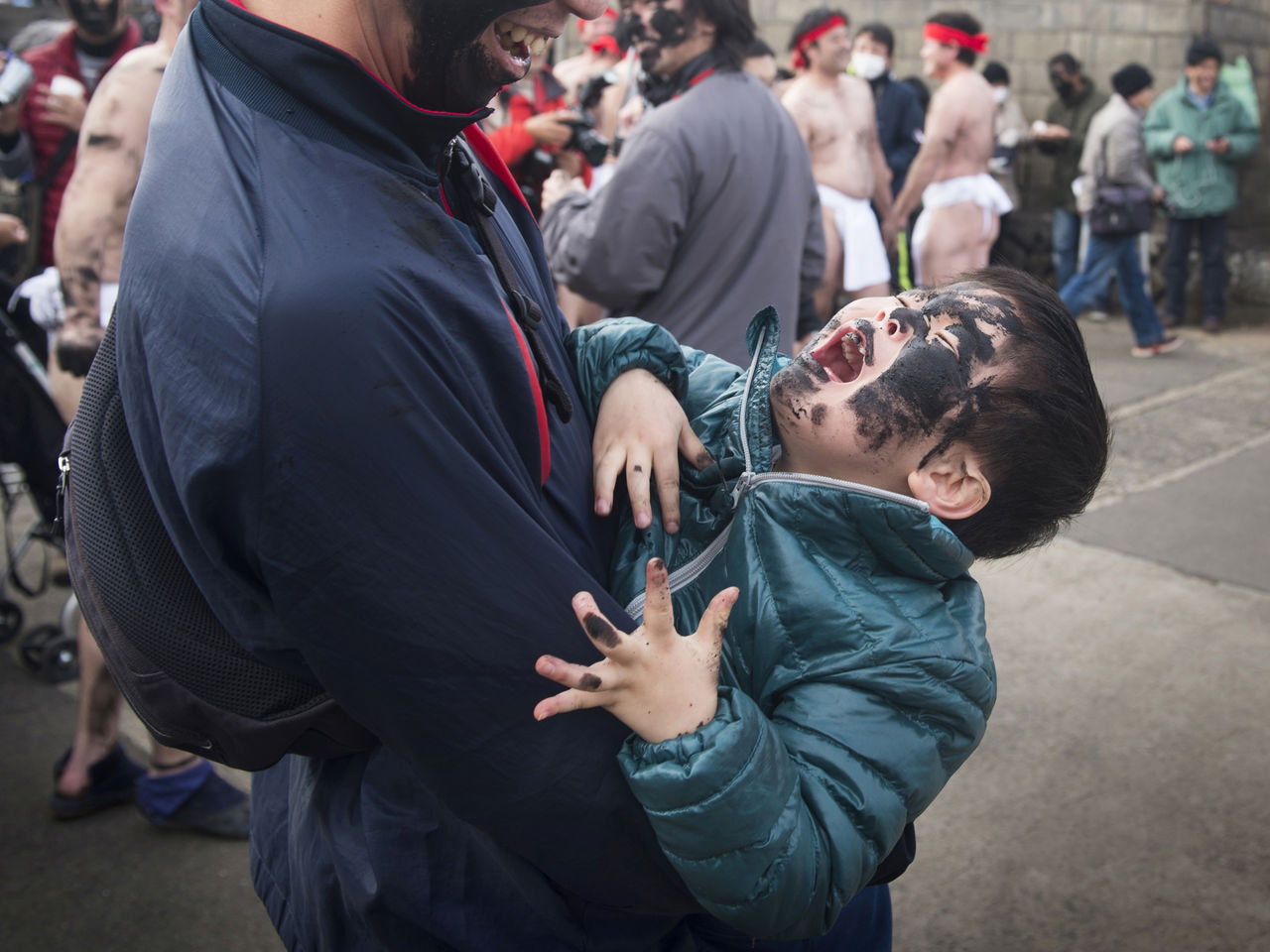 A soot-daubed boy appeals in vain for his father’s sympathy.
A soot-daubed boy appeals in vain for his father’s sympathy.
The Wonders of Nature in the New Year
Late winter in the Gotō Islands is a beautiful time to visit. The air, always fresh in this part of the country, is particularly clear at this time of year, turning the sunrise and sunset into moments of magic. One particularly attractive spot is Arikawa Bay on Nakadōri, an island speckled with picturesque islets. Watching the boats ply back and forth through the crystal-clear waters, time seems to stand still.
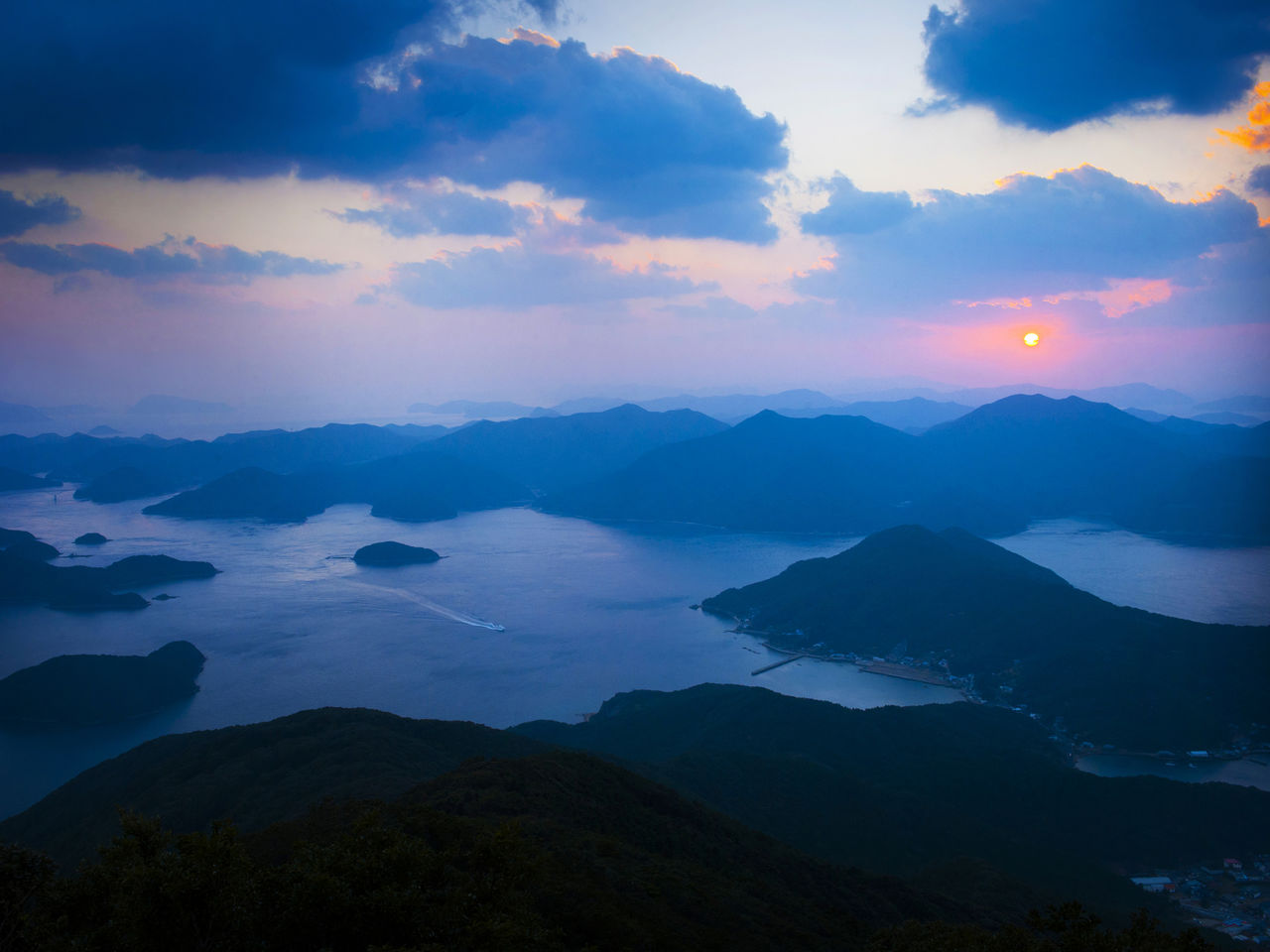 Sunrise and sunset are magic hours at Arikawa Bay.
Sunrise and sunset are magic hours at Arikawa Bay.
As part of the New Year festivities, a coming-of-age ceremony is held at the Aokata Shrine, also located on Nakadōri. Many people return to the island for the New Year. Young men and women celebrating their twentieth birthdays dress in their best suits and kimonos, full of hopes and dreams as they take part in this formal occasion to mark their accession to adult society. In the space of single month, the Gotō Islands offer the opportunity to experience a solemn old-fashioned coming-of-age ceremony and the riotous Hetomato Festival. This contrast is one of the things that makes a visit to these islands so enjoyable.
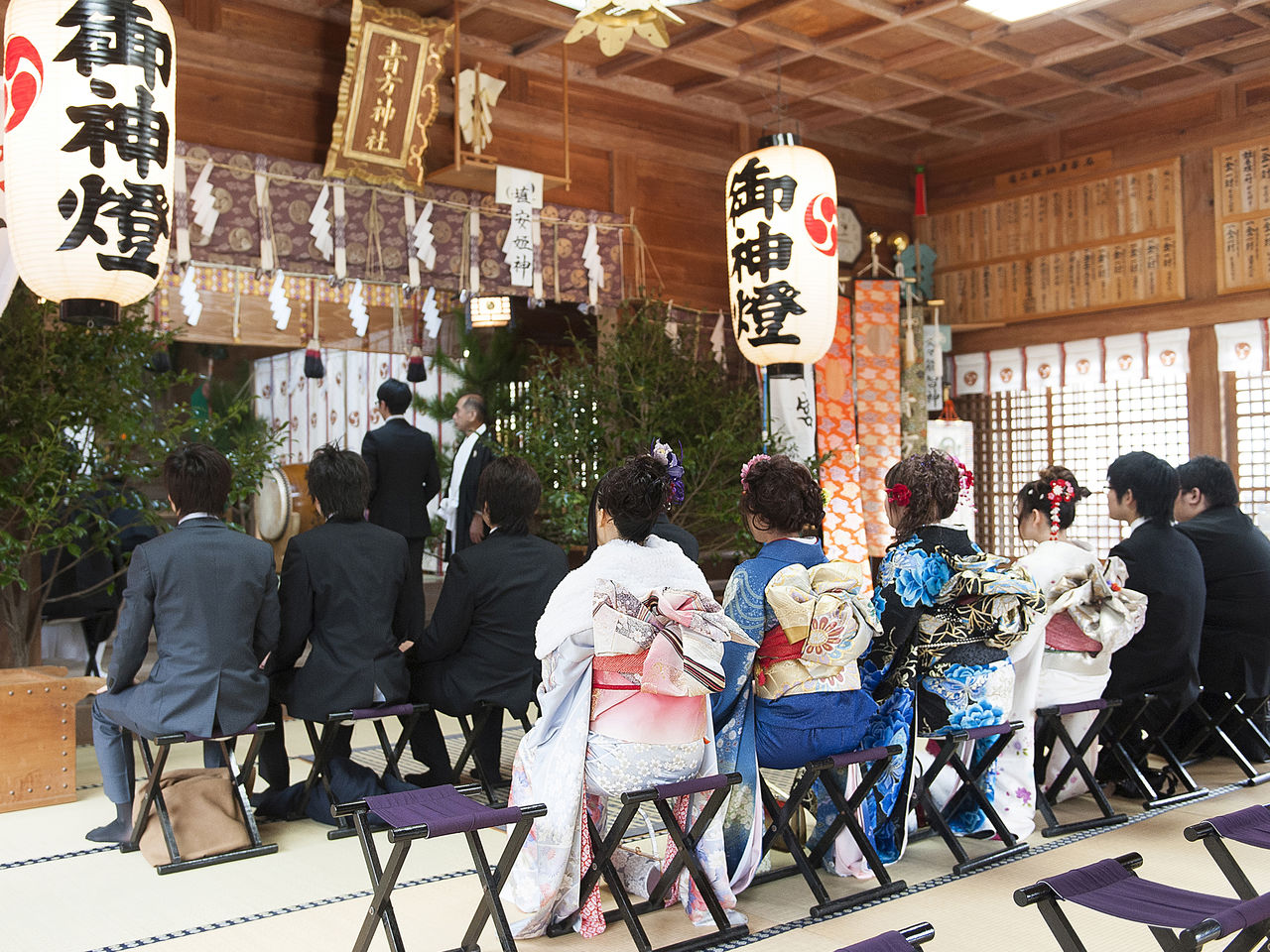 Young people on their best behavior in the solemn setting of a traditional coming-of-age ceremony.
Young people on their best behavior in the solemn setting of a traditional coming-of-age ceremony.
Midsummer Obon Dances and Continental Influences
Each season in the Gotō Islands has its own appeal, but summer is a particularly attractive time of year. The islands boast many beautiful beaches, including the clear waters and gently sloping shallows of Takahama on Fukue Island. The islands are ablaze with color: the beautiful white of the beaches, the dense green of the mountains, and the subtle gradations of the ocean’s blue. All these come together at the beaches of the Gotō Islands, and the wonders of pristine nature experienced close up delight the senses. Away from the coast, the islands also offer numerous places to enjoy the fresh air and solitude of shady forests and secluded woods, including the famous Dondon-buchi waterfall.
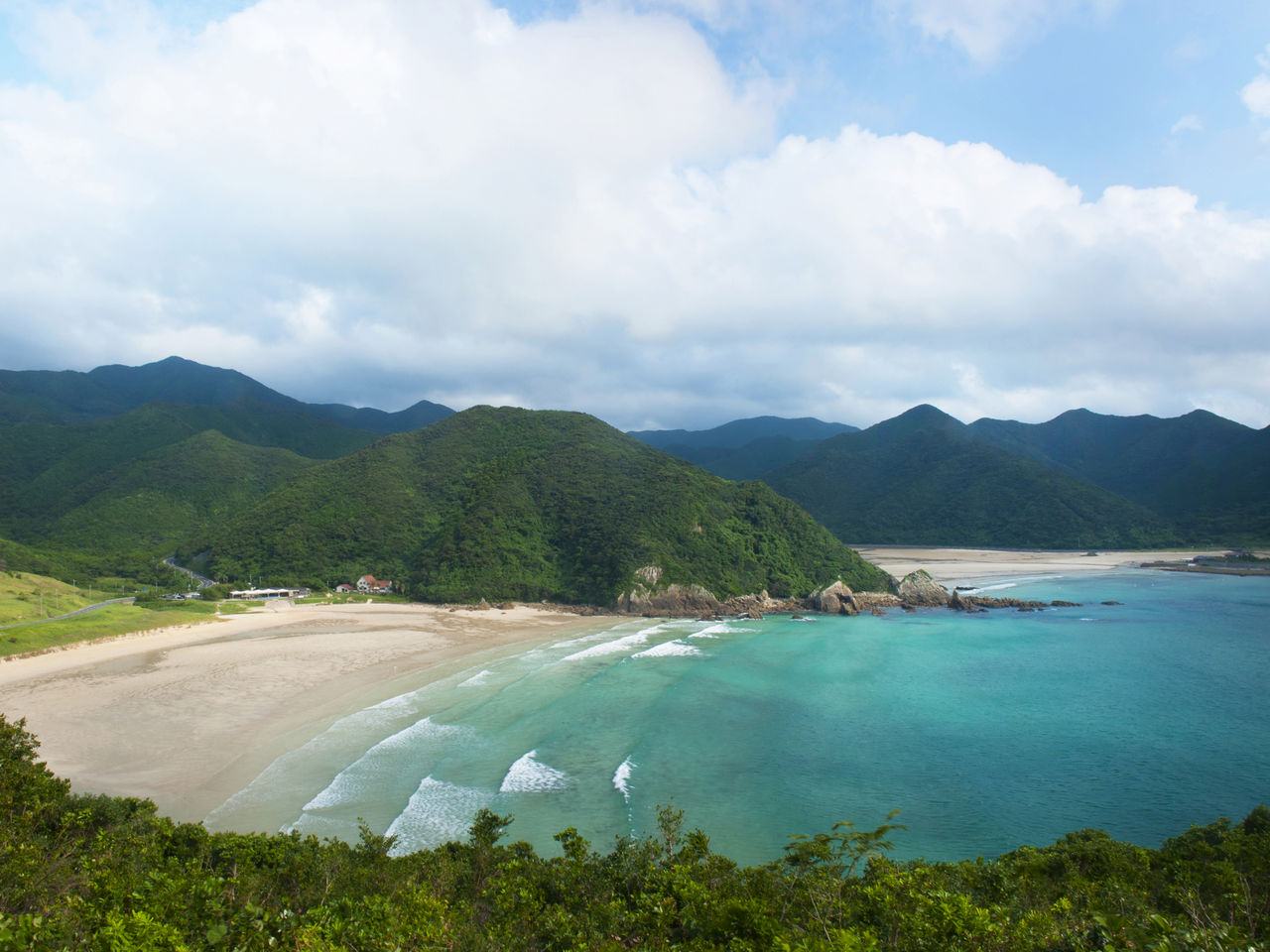 Surrounded by green mountains, the beautiful waters of Takahama beach have been voted among the best in Japan.
Surrounded by green mountains, the beautiful waters of Takahama beach have been voted among the best in Japan.
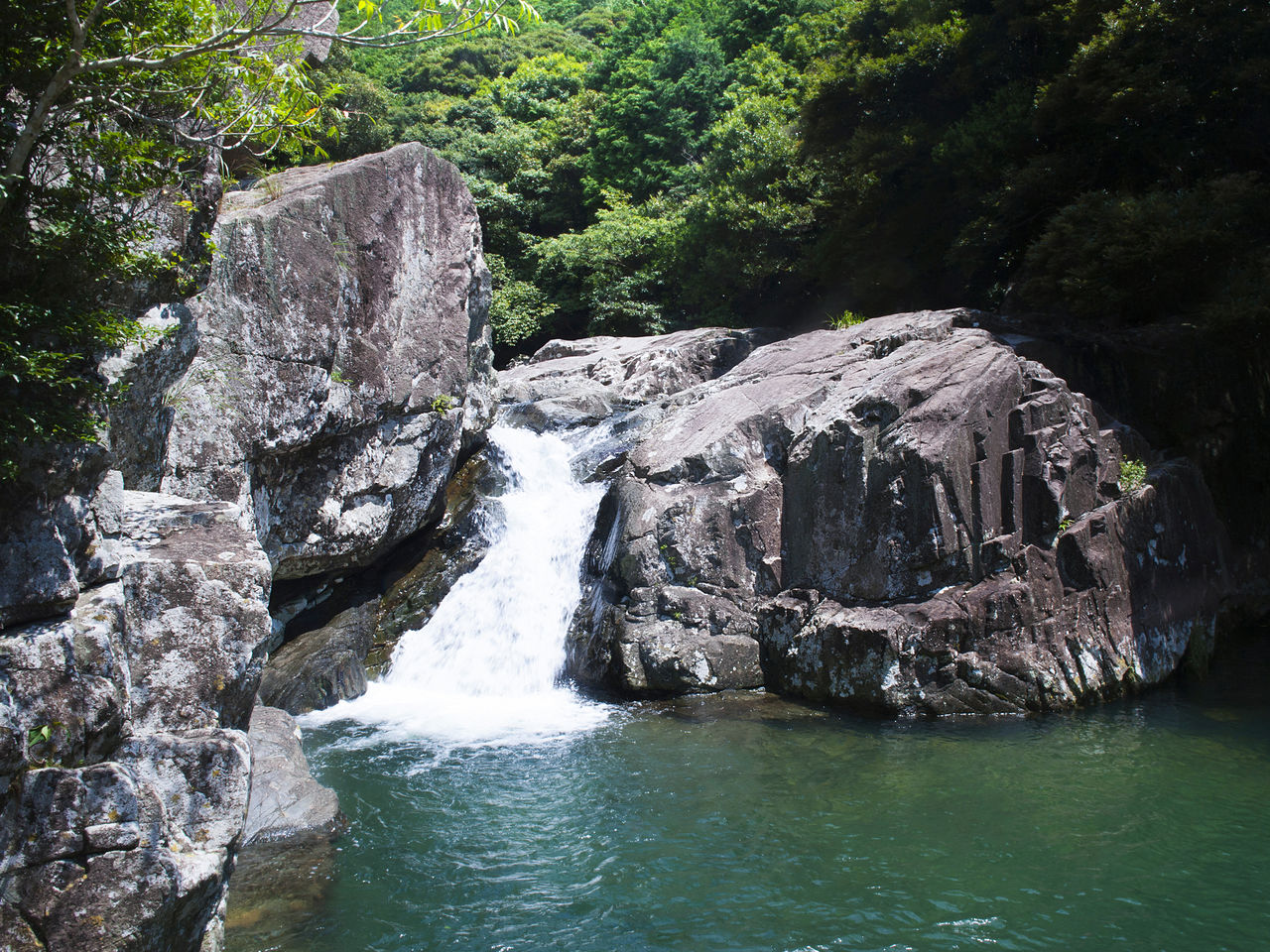 During the hot summer months, the Dondon-buchi waterfall is a favorite swimming hole for the local children.
During the hot summer months, the Dondon-buchi waterfall is a favorite swimming hole for the local children.
The islands’ best-known summer festivity is the nenbutsu-odori during Obon, the midsummer festival of the dead. Although each district has its own particular name for the dances—chankoko on Fukue, ōmondē on Sagano, oneonde on Tomie, and kake-odori on Tamanoura—all feature a combination of shō bells and taiko drums. Locals dress up in distinctive traditional costumes sing and sway in time to the rhythm of these instruments. It makes for a thrilling, exotic sight, a vivid reminder of the islands’ long history as a conduit for cultural influences from the continent.
 Performing the chankoko dance during Obon to pacify the spirits of the dead.
Performing the chankoko dance during Obon to pacify the spirits of the dead.
 Colorful costumes and vibrant drumming are among the attractions of the ōmondē dances.
Colorful costumes and vibrant drumming are among the attractions of the ōmondē dances.
The Gotō Islands offer a rich array of experiences, from natural beauty to unique festivals. Every time I visit I am reminded of how deep and special a place it is, and on the ferry back to the mainland I always find myself making plans to return.
 Oneonde is another Obon dance performed in memory of the dead.
Oneonde is another Obon dance performed in memory of the dead.
(Originally published in Japanese on April 19, 2018. Photographs and text by Kuroiwa Masakazu of 96Box.)
